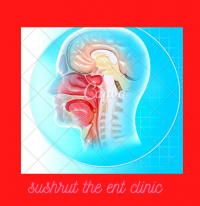Muscle tension dysphonia —-Dr Parvathi banu
Muscle tension dysphonia [MTD] is an alteration in voice production due to incorrect vibratory patterns of vocal folds caused by imbalance in the coordination of muscles of larynx and breathing pattern needed to create voice. It is imbalance in tension between intrinsic and extrinsic muscles .
There are 2 types: primary [no anatomical abnormality] and secondary [with anatomical abnormality] Stress and anxiety are common causes for MTD , other causes being reflux gastritis ,allergies ,hormonal imbalance and sometimes as a side effect of medications like antihistamines .
Common symptoms associated with MTD are : hoarse voice ,vocal fatigue ,voice breaks ,breathy voice ,loss of range during singing ,pain while speaking and singing. Sometimes the patient can visit with sensation of lump in throat with constant throat clearing.
Treatment for MTD is basically voice therapy. Sometimes massage of neck muscles to relieve tension also improves voice along with behavioral counselling.
